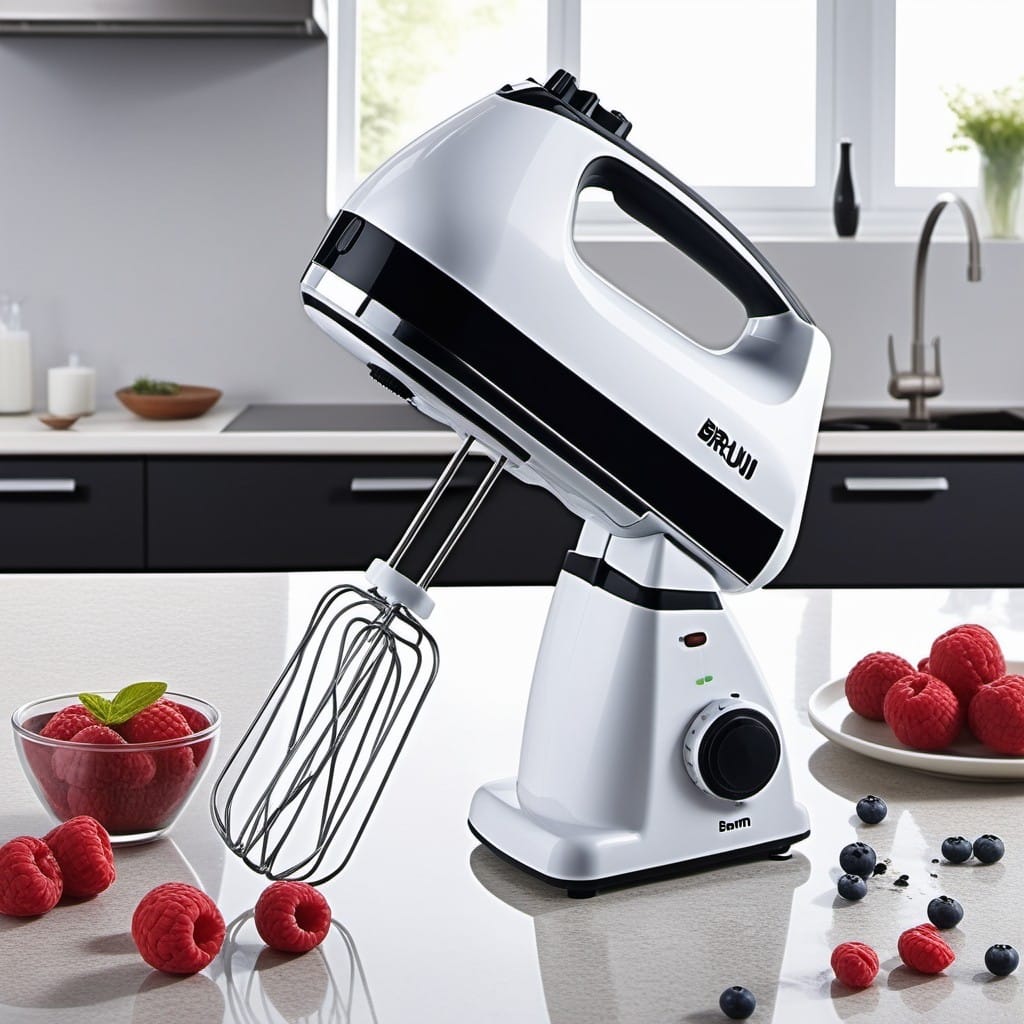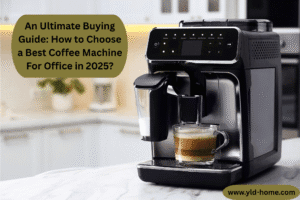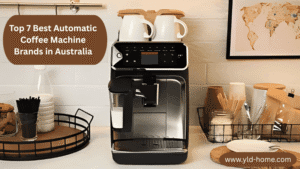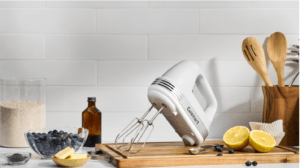In the bustling world of baking, a hand mixer stands out as an indispensable tool for both amateur bakers and professional chefs. Its convenience and efficiency streamline many kitchen tasks, making it easier to prepare delicious baked goods. This blog explores the various aspects of hand mixers, helping you understand how they can elevate your baking experience.
What Are the Key Features to Look for in a Hand Mixer for Quick Cooking?
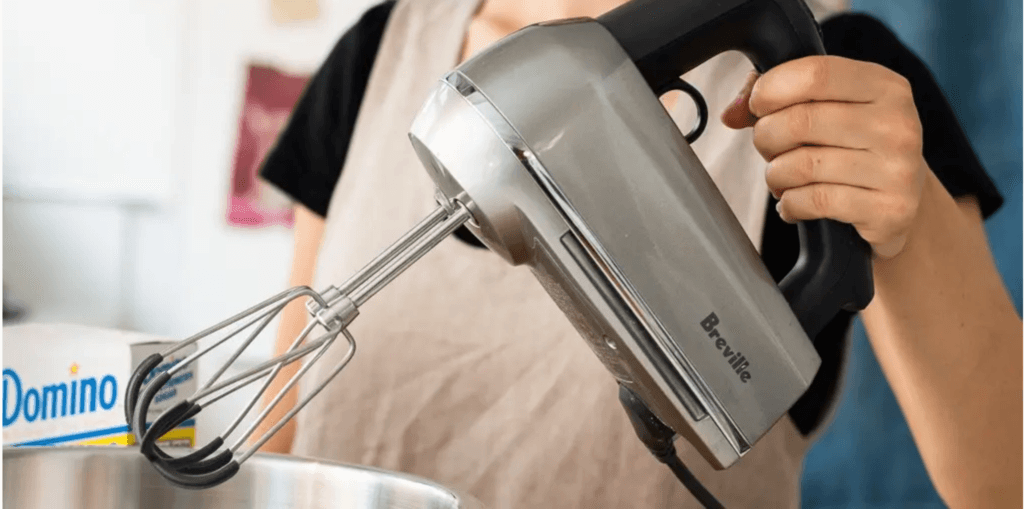
When shopping for a wholesale electric handheld mixer, it’s essential to consider several key features to ensure quick and efficient cooking.
- Power and Speed Settings: Look for a hand mixer with multiple speed settings and a powerful motor. This allows for better control over mixing different ingredients, from light cream to dense dough.
- Ergonomic Design: An ergonomically designed mixer ensures comfortable use, reducing hand fatigue during prolonged mixing tasks.
- Lightweight and Compact: A lightweight, compact design makes it easy to handle and store the mixer, especially in small kitchens.
- Durable Beaters: Opt for mixers with stainless steel beaters, which are durable, rust-resistant, and easy to clean.
- Ease of Cleaning: Mixers with detachable, dishwasher-safe parts simplify the cleaning process, saving time and effort.
- Noise Level: Consider mixers that operate quietly to enhance the overall baking experience without the disturbance of loud noise.
How Does Motor Power Affect the Performance of a food Mixer?
The motor power of a wholesale food dough hand mixer directly impacts its performance. A more powerful motor can handle tougher mixing tasks with ease, ensuring consistent results.
- Consistency and Texture: A high-powered motor ensures even mixing, preventing lumps in batters and doughs.
- Efficiency: Strong motors reduce mixing time, making the baking process quicker and more efficient.
- Versatility: Mixers with higher wattage can handle a wider range of ingredients, from light creams to thick doughs, enhancing their versatility in the kitchen.
- Durability: A robust motor increases the longevity of the mixer, making it a reliable kitchen investment.
What Beaters Materials Are Best for Efficient Mixing?
Choosing the right beater material is crucial for achieving efficient mixing. When browsing for a hand mixer sale, consider these options:
- Stainless Steel: Durable, rust-resistant, and easy to clean, stainless steel beaters are ideal for heavy-duty mixing tasks.
- Silicone-Coated Beaters: These are perfect for non-stick cookware, preventing scratches and ensuring smooth mixing.
- Plastic Beaters: Lightweight and less expensive, plastic beaters are suitable for light mixing but may lack durability.
- Hybrid Beaters: Some mixers come with hybrid beaters that combine materials to offer the benefits of both durability and non-stick compatibility.
How Many Speeds Should a food Mixer Have for Versatility?
A versatile hand mixer should offer multiple speed settings. When searching for a hand mixer near me, consider the following:
- Low Speeds: Ideal for gentle mixing tasks like folding ingredients or starting the mixing process.
- Medium Speeds: Perfect for everyday tasks like mixing batters and mashing potatoes.
- High Speeds: Necessary for whipping cream, beating egg whites, and other tasks that require fast, powerful mixing.
- Pulse Function: A pulse feature provides an extra burst of power, useful for incorporating ingredients without overmixing.
- Turbo Boost: Some mixers offer a turbo boost feature for tackling particularly tough mixing tasks with ease.
What Are the Advantages of a Corded vs. Cordless Hand Mixer?
Choosing between a corded and a cordless hand mixer depends on your specific needs and kitchen setup.
- Corded Hand Mixers: These mixers provide consistent power and are ideal for long mixing tasks. However, they require a nearby power outlet and may limit mobility.
- Cordless Hand Mixers: Offering greater flexibility and portability, cordless mixers are perfect for kitchens with limited outlets. They are convenient for quick tasks but may have limited battery life.
- Battery Life and Charging: When choosing a cordless model, consider the battery life and the time required for a full charge to ensure it meets your baking needs.
- Weight and Balance: Cordless models should have a well-balanced design to prevent arm fatigue during use.
How to Choose a Hand Mixer for Specific Cooking Tasks Like Whipping or Beating?
Selecting the right hand mixer for specific tasks, such as whipping or beating, involves considering the attachments and power. When evaluating hand mixer beaters, look for:
- Whisk Attachments: Essential for whipping cream and egg whites, providing light and airy results.
- Dough Hooks: Designed for kneading dough, these hooks make it easier to prepare bread and pastry dough.
- Flat Beaters: Ideal for general mixing tasks, such as preparing batters and cookie dough.
- Specialty Attachments: Some mixers offer additional attachments like blender rods or choppers, adding to their versatility.
What Are the Benefits of Investing in a Hand Mixer with Multiple Attachments?
A hand mixer with multiple attachments offers several advantages, making it a valuable addition to any kitchen. When looking for the best hand mixer for baking, consider these benefits:
- Versatility: Multiple attachments enable the mixer to handle a wide range of tasks, from whipping cream to kneading dough.
- Cost-Effectiveness: Investing in a versatile mixer eliminates the need for separate appliances, saving both money and storage space.
- Convenience: Having the right attachment for each task enhances convenience and efficiency in the kitchen.
- Enhanced Baking Results: Using the appropriate attachment for each task ensures optimal results, improving the texture and consistency of your baked goods.
- Attachment Storage: Mixers with built-in storage compartments for attachments keep your kitchen organized and reduce the risk of losing small parts.
Step-by-Step Guide Before Buying a Hand Mixer
This detailed guide to buying the best hand mixer will help you make the right choice.
1: Assess Your Cooking Needs
Identify the main tasks that you will use your hand mixer to perform, such as food preparation, whisking, and beating. By identifying your needs, you can choose a model that suits your cooking style.
2: Decide Between Manual and Electric
Manual mixers are affordable and portable, making them ideal for smaller tasks. Electric hand mixers are more powerful and efficient, perfect for large meal preparation or frequent use.
3: Evaluate Size and Capacity
Select a model suitable for your family size. Choose a smaller capacity model for preparing a few servings and a larger capacity for families or bulk meals.
4: Check Mixer Quality
Ensure the mixers are made of high-quality stainless steel. Durable beaters last longer and allow for precise mixing tasks.
5: Look for Additional Features
Some mixers have attachments for whisking and beating. Consider these accessories if you’re looking for a multi-purpose tool.
6: Ease of Cleaning
Select a hand mixer with parts that can be easily cleaned manually or with removable, dishwasher-safe pieces. This will save you time and energy during cleanup.
7: Compare Brands and Read Reviews
Search online for reviews and ratings of different models and brands. This will help you gauge the performance, durability, and customer satisfaction of a product.
8: Set Your Budget
Decide how much money you are willing to spend. Basic models may be affordable, but higher-end models with more features will require a larger budget.
9: Test for Comfort and Ergonomics
If possible, try the product in-store to ensure the grip and operation are intuitive and easy. Maintaining stability during use is essential.
10: Verify Warranty and Customer Support
Ensure the product is covered by a warranty. Reliable customer service from the manufacturer can be invaluable if any problems arise.
Most Asked Questions About Hand Mixer
Q1: Can a Hand Mixer Replace a Food Processor?
Answer: A hand mixer can be used for smaller tasks such as chopping or dicing but it is not a replacement for a processor. Food processors can handle larger quantities and are capable of handling tasks such as kneading bread dough or making large batches.
Q2: Is a Manual or Electric Hand Mixer Better?
Answer: Your needs will determine the choice you make. Electric mixers are better for large quantities of work and are more efficient than manual kitchen hand mixers.
Q3: Can I Use a Hand Mixer for Meat?
Answer: The best hand mixer is capable of handling certain meat preparations. However, it’s more commonly used for mixing batters, doughs, and other baking-related tasks.
Q4: How Do I Clean a Hand Mixer?
Answer: The parts of most hand mixers are dishwasher safe and easily removable, making them easier to clean. To prevent residue from building up, wash the beaters with soapy warm water after each use.
Q5: What Should I Avoid Putting in a Hand Mixer?
Answer: Avoid using hard foods like frozen food or bones, which can damage the beaters. Check your mixer’s instructions for the best results. Sticky or wet ingredients can also cause problems if not mixed correctly.
Conclusion
A hand mixer is an essential kitchen tool that simplifies baking tasks, offering convenience and efficiency. When choosing a hand mixer, consider factors like motor power, beater materials, speed settings, and the advantages of corded versus cordless models. Investing in a hand mixer with multiple attachments provides versatility and value, making it easier to tackle various cooking tasks. Whether you’re a professional baker or a home cooking enthusiast, finding the best hand held mixer that suits your needs will enhance your culinary experience. For added convenience, consider a hand mixer with storage case to keep all attachments organized and easily accessible.
By understanding the key features and benefits of different hand mixer models, you can make an informed decision that enhances your baking and cooking endeavors. With the right hand mixer, preparing everything from light, fluffy meringues to dense, rich bread dough becomes a seamless and enjoyable process.

